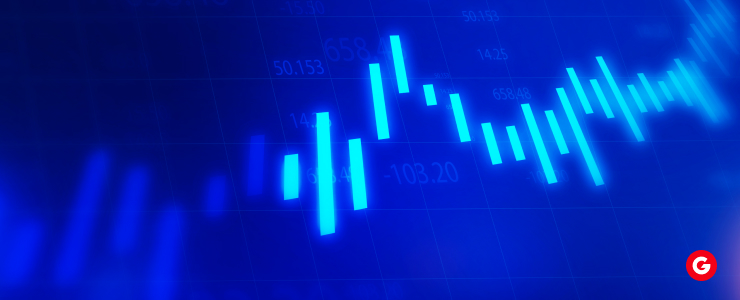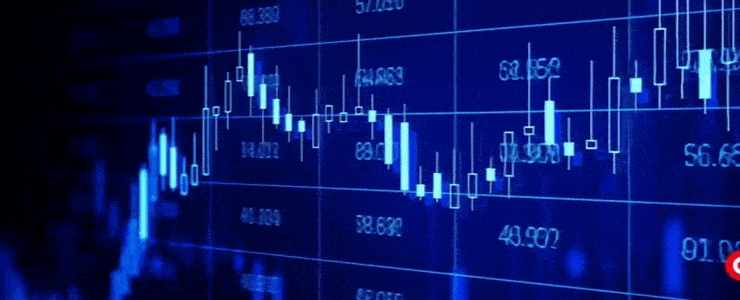Market volatility is an important part of the financial market as the majority of traders’ profits and losses are dependent on it through price fluctuations. Specifically, volatility clusters mean a time when the low and high volatility market is visible for the related low and high volatility occurrences for traders.
Volatility clusters in the forex market can significantly impact traders’ strategies and prediction models. This is crucial for traders to comprehend because it can provide valuable insights into market movements and help them predict them through the implementation of various tools.
In this following guide, we will talk about volatility clusters in the forex market and how traders can predict it.
How Do You Explain Volatility Clusters?
If you are a regular trader in the forex market, you must be familiar with the market volatility that often occurs and impacts the price fluctuations. It is not just in the forex market, you can also experience volatility periods in CFD trading while trading commodities and stocks.
Volatility Clusters in terms, are seen as occurrences that you can witness in the financial platforms where high volatility time occurs by high volatility movement and the low volatility happens through low volatile market movements. This volatility movement varies from the random idea you would volatility to occur without any visible patterns.
If you are a forex trader, volatility can take place due to various reasons that range from economic information announcements, intergovernmental occurrences, and international monetary policy drifts to market sentiment. These instances are responsible for extending the market activities and major price value drifts which is a sign of a low volatility period.

5 Various Tools And Approaches for Calculating Volatility
You can conduct your trading operation on the MT4 trading platform to access several automated tools to calculate volatility in the forex market.
However, there are also other tools and techniques through which you can measure the market volatility and they are:
1. Bollinger Bands
Bollinger bands are great assets to measure volatility in the market as these bands have an MA (Moving Average) and dual basic deviation dashes that are placed over and beneath the moving average. Bollinger bands’ operations especially their expansion and approach are dependent on the market volatility.
For instance, if there is a high volatility period in the trading market, the Bollinger bands become broader, and when the market is in a low volatility period the bands normally contract.
2. ATR
ATR or the Average True Range is a renowned indicator to calculate a currency pair’s volatility for a certain time. If you notice a high Average True Range, this is an indication of high volatility and when the Average True Range is low, the scenario suggests a period of low volatility.
If you properly track the Average True Range (ATR), you will be able to detect the volatility clusters in the forex market and help you maintain your volatility strategy following the proper needs. You can get the ATR option on the MetaTrader 4 platform.
3. Implied Volatility
Inferred or implied volatility refers to the calculation of the financial market’s assumption on the upcoming volatility period which is normally obtained through the options price values. If there is a high implied volatility, the forex traders can assume major price drifts in the upcoming time, and for the low implied volatility, the traders can safely estimate stability.
4. Historical Volatility
Historical volatility suggests or refers to the previous price value movements of a currency pair. If you observe the historical volatility closely, you can obtain valuable data regarding how frequently the volatility clusters had taken place previously and use this data to construct forecasts on the upcoming price drifts.
5. Volatility Category
Many volatility categories like the Volatility Index (VIX) can detect the inclusive volatility in the market and can offer insights into the upcoming forex market situation. However, the Volatility Index (VIX) is not closely associated with the forex market itself but it can offer you a large comprehension of market sentiment when the market is in a highly uncertain period.

Efficient Strategies for Predicting Volatility Clusters
Forex traders must comprehend the functions and evaluate the operations of the volatility clusters. After acquiring such knowledge, they need to implement these data to predict the next major price fluctuations and there are various strategies and practices for you to implement such as:
1. Following Trends Alongside Volatility Breakouts
Volatility Breakouts are one of the most effective ways for you to foresee the major shifts in the forex market’s volatility clusters. When there is a low volatility period, the price value operates in slender radius, however, a breakout happens once you observe the price value shifts above this scale which can ultimately be responsible for larger movements.
Forex traders can implement various tools and indicators such as the Average True Range (ATR) and Bollinger bands to detect breakout directions.
2. Mean Backsliding Plan
An opposite scenario of the trend following procedure suggests the mean backsliding plan which surmises high volatility periods will ultimately become stable through a return. And when a high price drift concludes, the forex market might overcompensate itself which can lead to a short-term halt or overturn.
The following instance gives a convenient to the traders to step into positions through which they can assume that the trading platform will get back to its equilibrium and by implementing tools like the Bollinger bands, they can halt until the market returns when it approaches the outer bands which can indicate overextension.
3. Risk-Management Through Volatility
You need to have a risk-management strategy when you are trading in a market with high volatility. You can take help from facilities like the Average True Range (ATR) to maintain your position volumes and stop-loss sequence appropriately.
When you notice a high volatility time, it is recommended that you decrease your position volumes and enhance the stop-loss sequences for holding higher price drifts. Contrarily, in low volatility scenarios, you can increase your position volumes and harden the stop-loss sequences.
4. News-Oriented Volatility Forecasts
Basic inspections can also help you a lot in predicting the volatility clusters in the trading markets. Several factors such as the economic statements, central bank policies, and even intergovernmental occurrences can cause major drifts in the currency standards.
If you can detect these movements, you would be able to position yourself before a volatility takes place in the trading market. For example, major occurrences like the NFP (Non-Farm Payrolls) announcements or interest rate resolutions can effectively cause a volatility to rise.
However, if traders estimate that these occurrences will cause major drifts in a currency pair, they will place themselves before the announcement which will probably capitalize on the volatility that will take place.

In Conclusion
If you want to predict the major move in the forex market, it will require a robust comprehension of volatility functions, especially when clusters indicate a low or high volatility time. If you combine technical indicators like the Bollinger bands and the implied volatility, it can help you predict the major upcoming price drifts. Also, there is online trading for daily trading convenience.
FXGiants is a place where you can achieve most of your trading facilities for your trading objectives. Our platform ensures that you can properly operate with highly functional and reliable trading tools and assets like commodities, stocks, etc. You can also make swift monetary withdrawals from our platform which is maintained by Notesco and other prominent licences.
FAQs
1. How can you foresee next-day volatility?
– You can foresee the next day volatility by several means that can range from statistical figures to machine learning procedures and a few of these examples consist of HV (Historical Volatility), IV (Implied Volatility), Generalized Autoregressive Conditional Heteroscedasticity and many more.
2. What is the most efficient predictor of upcoming volatility?
– You can find a lot of predictors to measure the upcoming or future volatility like the historical volatility and many more, however, the most efficient predictor is the implied volatility.
3. How can predict market volatility?
– You can predict the market volatility by several means such as gathering the security’s previous price values, calculating the mean of the security’s price, determining the variations between each price set and the mean, and many more.
4. How can you define the volatility clustering strategy?
– The following term suggests an investment procedure that leverages the volatility clustering occurrence in the financial platforms.
DISCLAIMER: This information is not considered investment advice or an investment recommendation, but is instead a marketing communication
